1. Overview
Abdulkerim Abbas (also known as Abbasov; 1921 - 27 August 1949) was a prominent Uyghur revolutionary, statesman, and educator who played a pivotal role in the political landscape of Xinjiang, China, during the early 20th century. He was a key leader of the Ili Rebellion of 1944, which led to the establishment of the Second East Turkestan Republic (ETR) in northern Xinjiang. Abbas, alongside Ehmetjan Qasim, spearheaded the Marxist faction within the ETR. Initially advocating for an independent East Turkestan, he later shifted his stance to align with the Chinese Communist Party (CCP), viewing their victory in the Chinese Civil War as essential for the liberation of Xinjiang. His career culminated in his tragic death in a plane crash in August 1949, while en route to Beijing to participate in the Chinese communists' political consultative conference that ultimately led to the founding of the People's Republic of China. He is officially recognized as a revolutionary martyr in the People's Republic of China.
2. Biography
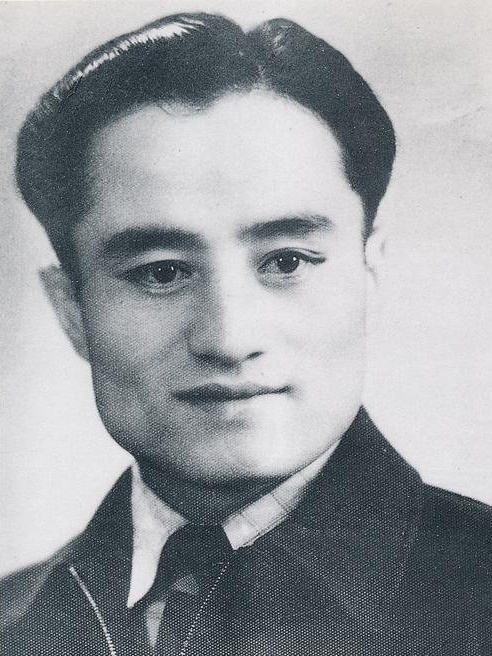
Abdulkerim Abbas's life journey was marked by significant political and personal transformations, from his early exposure to modern education and Marxist thought to his leadership in a major regional rebellion and subsequent alliance with the Chinese Communist Party.
2.1. Early life and education
Abdulkerim Abbas was born in 1921 in Przhevalsk, then part of the Russian SFSR in the Soviet Union, a city now known as Karakol in Kyrgyzstan. His family was originally from Artux (Artush) in far western Xinjiang. In 1926, his family relocated to Yining (Ghulja). He began his primary education in Uqturpan County (Wushi) in southern Xinjiang. In 1936, he enrolled in the Xinjiang Province No. 1 Middle School in Dihua, the provincial capital, now known as Ürümqi. This institution was among the first modern multiethnic schools established in the region.
During his time at school, Abbas began to learn the Chinese language and became involved with an anti-imperialist society, which was organized by members of the Chinese Communist Party (CCP). In 1937, he encountered Saifuddin Azizi, who had returned from exile in the Soviet Union and introduced Abbas to Marxism-Leninism through various books. In August 1938, Abbas furthered his studies at the High School of the Xinjiang Academy, where he was mentored by Lin Jilu, a Chinese communist and his political science teacher. Lin Jilu provided personal tutoring to Abbas in Chinese and introduced him to the writings of Mao Zedong, including works on guerrilla warfare tactics employed by the Chinese Red Army and the historical Long March. In 1939, Abbas participated in the Xinjiang Academy Summer Tour Group, which was organized by the academy's president, Du Chongyuan. This tour took him through his home region of Ili, accompanied by Chinese communists, further cementing his political leanings.
2.2. Early activities and political leanings
During this period, Sheng Shicai, the Chinese warlord governing Xinjiang who had previously maintained a pro-Soviet stance, shifted his allegiance towards the Chinese Nationalist government. This change in political alignment led to a severe crackdown on communist and pro-Soviet activities across Xinjiang. As a consequence, Abbas's father was arrested, and Abbas himself was expelled from school. He was subsequently assigned to teach at a primary school in Shawan County in the Dzungar Basin of northern Xinjiang. It was in Shawan that he translated Mao Zedong's influential essay, On Protracted War, into the Uyghur language. In 1942, he received permission to return to his hometown of Ghulja. There, he initially taught at the Ili High School for Girls before serving as an interpreter for the local government. Throughout these experiences, Abbas solidified his commitment to a Marxist-Leninist political stance, increasingly opposing both imperialist and capitalist exploitation, which he viewed as intertwined with the repression imposed by the Chinese Nationalists.
3. Ili Rebellion and Second East Turkestan Republic
Abbas played a crucial role in the 1944 Ili Rebellion and was a significant figure in the establishment and governance of the Second East Turkestan Republic (ETR). His leadership spanned both political and military spheres, driving the revolution and shaping its initial character.
3.1. Organization of the rebellion and motivations
In April 1944, Abdulkerim Abbas, alongside influential local figures such as the Ghulja imam Elihan Tore and Rahimjan Sabir Khoja, formed the Ghulja Liberation Organization. This 12-member group was dedicated to liberating the region from Chinese Nationalist rule. To avoid government surveillance, Abbas relocated to Korgas, where he reportedly received assistance and materiel from the Soviet Union.
In September 1944, Sheng Shicai, the then-ruler of Xinjiang, was recalled from the province by the Chinese Nationalist government, leaving a significant power vacuum. This political instability ignited several rebellions across northern Xinjiang. In October 1944, Abbas returned to Ghulja with a guerrilla force, and on November 7, 1944, he launched the Ili Rebellion. Abbas, working with Soviet advisor Peter Romanovich Alexandrov, led a group of 60 men to seize the bridge over the Ili River, effectively cutting off the city from Chinese Nationalist reinforcements. Other rebel forces from Nilka County fought their way into Ghulja, quickly gaining control. Nationalist strongholds were eventually taken with the crucial support of Soviet warplanes and artillery. Following the capture of Ghulja, the revolutionaries, including some elements within the movement, engaged in massacres of a significant number of Chinese Nationalist prisoners of war and Han Chinese residents.
The revolution garnered support from diverse factions, including Islamists, Pan-Turkic nationalists, and Marxists. It rapidly spread beyond Ili to areas such as Tacheng (Tarbaghatay) and Altay Prefecture (Ashan). On November 11, 1944, the revolutionaries officially founded the Second East Turkestan Republic (ETR) in Ghulja, with Elihan Tore serving as its president. Abdulkerim Abbas was appointed as the ETR's Interior Minister. The underlying motivations for the rebellion were multifaceted, encompassing a desire for national liberation from Chinese Nationalist rule and a broader aim for social change, which for Abbas and his faction, involved challenging capitalist exploitation and promoting social justice.
3.2. Role within the East Turkestan Republic
Unlike some Islamist and pan-Turkic nationalist elements within the rebellion who sought to establish a unified pan-Turkic regime in Xinjiang, Abdulkerim Abbas viewed the revolution primarily as a struggle against Chinese Nationalist repression and the capitalist exploitation of all working-class people, regardless of ethnicity. Demonstrating his commitment to inter-ethnic harmony and humanitarian principles, he notably opposed a proposal to forcibly relocate all Han Chinese from Ghulja to internment camps in Xinyuan County (Künes County).
Abbas issued direct orders aimed at protecting Han Chinese residents in Ili and even took the step of moving the families of his Han friends and associates into his own home for their safety. After the cessation of intense fighting in Ghulja, the ETR government, under his guidance, established a Han Affairs Office dedicated to assisting Han Chinese residents. Furthermore, a Chinese-language newspaper was published, the Han Chinese primary school was reopened, and an orphanage for Han Chinese children was founded, all reflecting his efforts to promote social justice and protect all ethnic groups.
On April 8, 1945, the various guerrilla and partisan units that had spearheaded the revolution were formally organized into the East Turkestan National Army (ETNA). Abbas was appointed as its political director. The ETNA was a multiethnic force, predominantly led by Uyghurs, Kazakhs, Kyrgyz, and Russians. It also included cavalry brigades composed of Hui, Mongol, and Xibe individuals, along with some Han Chinese recruits. With the strategic assistance of Soviet advisors and military personnel, the ETNA launched a series of offensives aimed at expanding the ETR's control beyond the immediate Ili Valley.
3.3. Southern offensive and Aksu campaign
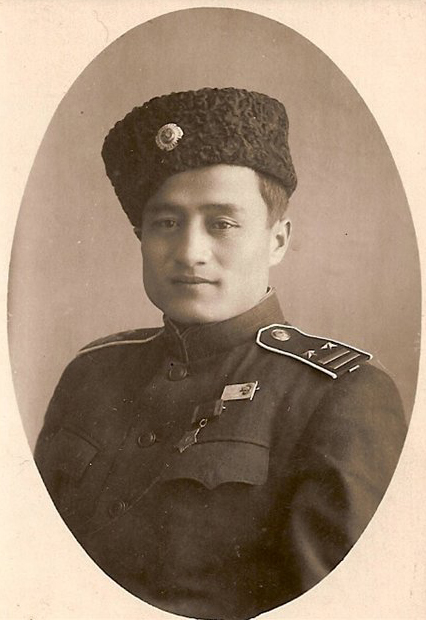
In July 1945, Abdulkerim Abbas personally led the southern wing of the ETNA's offensive, directing his forces towards Aksu. In August, Abbas's troops successfully captured the strategic passes through the Tian Shan mountains, which provided a crucial link between the Ili Valley and the Tarim Basin. This allowed the ETNA to advance further south, taking Baicheng County on September 2 and Wensu County on September 6.
However, the political landscape shifted dramatically when the Chinese Nationalist government and the Soviet Union concluded the Sino-Soviet Treaty of Friendship and Alliance on August 14, 1945. This treaty led to the cessation of Soviet military support for the ETR and ETNA. To bolster the ETR's bargaining position in the face of this changing geopolitical reality, Elihan Tore ordered the ETNA to intensify its attacks in early September. Abbas surrounded Aksu on September 7, but the Chinese Nationalist defenders, under the command of Zhao Hanqi, mounted a fierce resistance and managed to break the siege on September 13. During this period, Abbas's brother, Siyiti Abbas, and other ETR political activists who had been imprisoned inside Aksu were tragically executed by the Chinese Nationalist authorities.
In mid-September, Abbas, reinforced by Soviet advisor Nasyrov and Tore's son, resumed the siege of Aksu. Despite weeks of desperate fighting, the ETNA was ultimately forced to abandon the campaign on October 6. Six days later, on October 12, the ETR and the Chinese Nationalists commenced peace talks in Dihua. These negotiations eventually led to a peace accord, which was reached in February 1946.
4. Coalition Government and Alliance with the CCP
Abbas navigated a complex political landscape during the transitional period in Xinjiang, participating in a coalition government with Chinese Nationalists while simultaneously forging a strategic alliance with the burgeoning Chinese Communist Party.
4.1. Formation of the Xinjiang Provincial Coalition Government
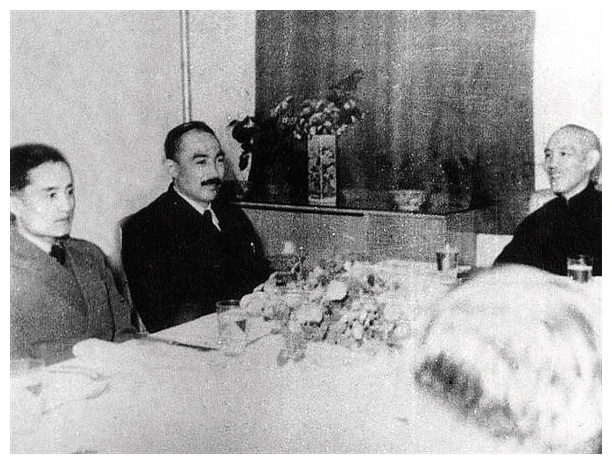
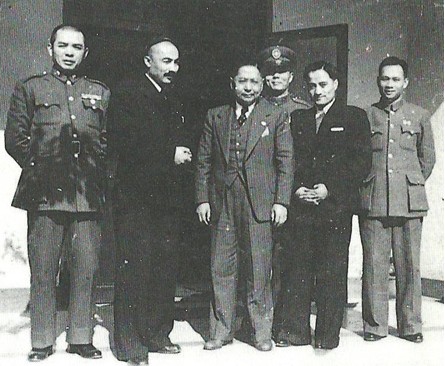
In July 1946, following extensive negotiations between Zhang Zhizhong of the Chinese Nationalist government and Ehmetjan Qasim of the ETR, both parties reached an agreement to establish a provincial coalition government. Under this arrangement, Zhang Zhizhong was appointed chairman, with Qasim serving as vice-chairman. Abdulkerim Abbas was designated as the deputy secretary-general of this new government. As part of this political compromise, Abbas and Qasim consented to set aside the ETR's previous declarations of independence. A significant consequence of this agreement was the forced exile of Elihan Tore from Xinjiang to the Soviet Union. In December 1946, Abbas further solidified his role in the broader Chinese political sphere by attending the Chinese National Assembly in Nanjing as a delegate representing Xinjiang.
4.2. Contact with the Chinese Communist Party and organizational integration
During his visit to Nanjing, Abdulkerim Abbas held a clandestine meeting with Dong Biwu, a CCP delegate from Yan'an, where he formally sought support from the Chinese Communist Party. He informed Dong that the Communist League of Xinjiang had approximately 15,000 members and that its leadership had previously attempted to join the Communist Party of the Soviet Union but had been denied permission. Dong Biwu immediately cabled Zhou Enlai regarding Abbas's request. Zhou Enlai responded, indicating that the CCP would welcome cooperation with the Communist League of Xinjiang and would, in principle, agree to membership for its leaders within the CCP.
Abbas returned to Xinjiang equipped with documents from the CCP's 7th National Congress and radio equipment intended to establish direct communication with the CCP. However, the radio's power was insufficient to reach Yan'an from Xinjiang, preventing regular contact between the two communist groups. Back in Xinjiang, under Abbas's leadership, two key Marxist organizations-the East Turkestan Revolutionary Party and the Communist League of Xinjiang-merged to form the Democratic Revolutionary Party (DRP). Abbas subsequently became the chair of the DRP's central committee.
4.3. Strengthening support for the Chinese Communist Party
In 1947, after Zhang Zhizhong departed the province, relations between the ETR and the Chinese Nationalists deteriorated significantly, particularly under the chairmanship of Masud Sabri, whom the ETR leaders viewed as anti-Soviet. As the full-scale Chinese Civil War intensified across China proper, the Chinese Nationalists successfully persuaded Osman Batur, a prominent Kazakh military leader, to defect from the ETR. In response, Abbas and Qasim returned to Ghulja from Dihua and openly declared their support for the Chinese Communists.
On August 1, 1947, they founded the League for the Defense of Peace and Democracy in Xinjiang (新疆保衛和平民主同盟Chinese (Chinese characters)), an organization that incorporated the Democratic Revolutionary Party and other leftist groups in Ghulja. Qasim assumed the role of chair, with Abbas serving as a member of its central committee. In February 1948, Abbas played a crucial role in propagating Mao Zedong's People's Liberation Army Proclamation and Disciplinary Code, translating it into Uyghur for distribution among the East Turkestan National Army.
As the Chinese Communists gained momentum in the civil war against the Chinese Nationalists, Abbas incrementally shifted the ETR government closer to the CCP's objectives. In May 1949, he publicly stated, "We categorically assert that the success of the People's Liberation Army alone rendered possible the victory of our own movement... Only the victory of the national liberation struggle of the entire Chinese people can lead to the full freedom of the people of Xinjiang; only then will the correct solution of the national question in Xinjiang be reached." This statement underscored his conviction that the CCP's triumph was indispensable for Xinjiang's true liberation.
In the late summer of 1949, following Liu Shaoqi's visit to Moscow in June, Joseph Stalin agreed to facilitate the political transfer of Xinjiang to the CCP. Subsequently, Deng Liqun arrived in Ghulja on August 17 to establish direct contact with the ETR leadership. Deng met with Abbas and Qasim, conveying Mao Zedong's invitation for them to attend a political consultative conference in Beiping (now Beijing). The ETR leaders accepted this invitation, marking a crucial step towards Xinjiang's integration into the nascent People's Republic of China.
5. Personal Life
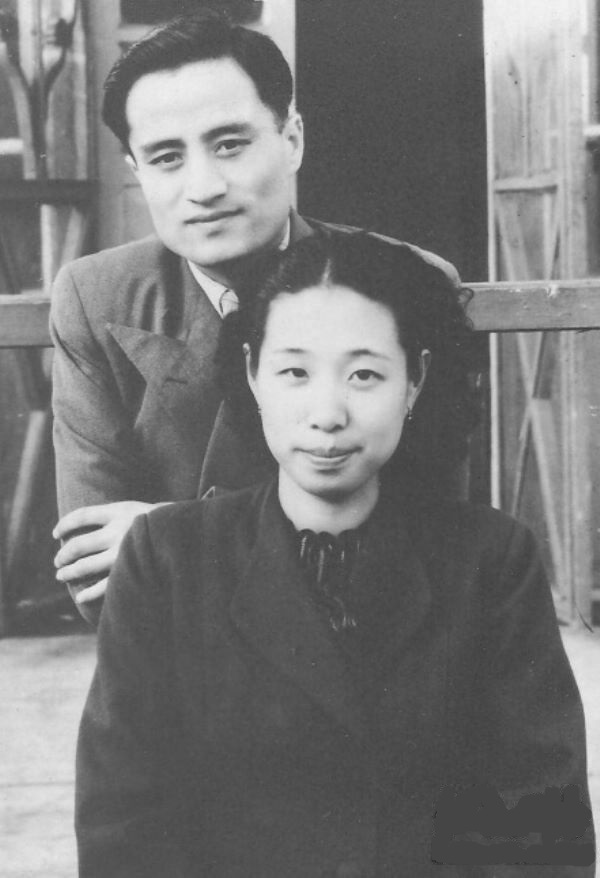
Beyond his prominent political and military career, Abdulkerim Abbas's personal life was marked by significant relationships and profound emotional experiences that influenced his worldview and actions.
5.1. First marriage and tragedy
While working as a teacher at the Middle School for Girls in Ghulja, Abdulkerim Abbas fell in love with Yang Fengyi (楊鳳儀Chinese (Chinese characters)), a colleague. Their relationship defied traditional Uyghur customs, which generally discouraged relationships outside the Islamic faith, and met with the disapproval of Yang's father, who was the head of the local Han merchants' association. Despite these societal pressures, their bond deepened. During the tumultuous period of the Ili Rebellion, Abbas provided shelter to the Yang family in his own home, demonstrating his personal commitment to their well-being. When Abbas fell ill, Yang nursed him back to health over a period of 40 days.
However, as the conflict between the Chinese Nationalists and the ETNA intensified in the spring of 1945, Yang Fengyi experienced extreme familial and societal pressure. In April, she tragically committed suicide using Abbas's pistol. In a parting letter, Yang explained her belief in transcending ethnic boundaries but stated that she could no longer tolerate the atrocities occurring around her. She wrote that she had died for him, urged him to protect her family, and implored him to continue living "for me, for the revolution, and for the people of all nationalities in Xinjiang." Abbas was deeply heartbroken by her death, which profoundly impacted him. In response to her sacrifice and the despair she expressed over the violence, he immediately issued strict orders banning the killing of civilians, underscoring his humanitarian concerns and commitment to inter-ethnic harmony.
5.2. Second marriage and children
After the profound tragedy of Yang Fengyi's death, Abdulkerim Abbas married Lü Suxin (呂素新Chinese (Chinese characters)), who had been one of Yang's students. Their marriage took place in February 1946. Together, they had two sons and one daughter, establishing a family life amidst his ongoing political and revolutionary work.
6. Death
The circumstances surrounding Abdulkerim Abbas's death involve a tragic plane crash while he was en route to Beijing for crucial political consultations. However, there exist differing accounts regarding the exact details of the event.
According to official Chinese state sources, Abbas, along with Ehmetjan Qasim, Ishaq Beg Munonov, Dalelkhan Sugirbayev, and Luo Zhi, departed from Ghulja on August 22, 1949. Their journey began with a car ride to Almaty. From Almaty, they flew to Novosibirsk on August 23, 1949, where they experienced a delay due to adverse weather conditions. Reportedly, the delegation, eager not to miss the critical political consultative conference in Beiping, insisted on continuing their journey and departed Novosibirsk on August 25, 1949. The plane they were on crashed in poor weather in the Transbaikal region on August 26, 1949, resulting in the deaths of all aboard. At the time of his death, Abdulkerim Abbas was 28 years old.
News of the crash reached Ghulja on September 3, 1949. Following this tragedy, Saifuddin Azizi led another delegation from the ETR government to Beiping, departing on September 7, 1949. This subsequent delegation traveled from Ghulja to Chita by air, and then completed their journey to Beiping by train, arriving on September 15 via Manzhouli and Shenyang.
An alternative account, primarily mentioned in Japanese sources, suggests a different fate for Abbas. This perspective proposes that he was not killed in a plane crash near Irkutsk/Novosibirsk but rather was assassinated on August 27, 1949, in Moscow, specifically at the Lubyanka building, the headquarters of the Soviet secret police. This contrasting narrative highlights the complexities and varying interpretations surrounding the deaths of these key figures.
7. Legacy and Assessment
Abdulkerim Abbas's legacy is deeply intertwined with the history of Xinjiang and the formation of the People's Republic of China, particularly in how he is officially remembered within the PRC and how his political actions are assessed.
7.1. Commemoration as a revolutionary martyr
In the People's Republic of China, Abdulkerim Abbas is officially revered as a martyr and a hero, recognized for his contributions to the struggle against the Chinese Nationalist government. His remains were repatriated to China in April 1950 and were later reburied in a martyrs' memorial cemetery located in Ghulja. This cemetery features a stele inscribed with calligraphy by Mao Zedong, which commends Abbas and his fellow martyrs for their significant contributions to the Chinese Communist Revolution and expresses sorrow over their untimely deaths while en route to the inaugural Chinese People's Political Consultative Conference in Beiping. This commemoration highlights the PRC's official narrative, integrating the leaders of the Ili Rebellion into the broader narrative of the communist revolution.
7.2. Historical assessment
Abdulkerim Abbas's historical assessment is complex, reflecting his unique position at the intersection of Uyghur national aspirations and the broader Chinese revolution. His political ideology was fundamentally Marxist, and he consistently framed the Ili Rebellion as a struggle against Chinese Nationalist repression and the capitalist exploitation of all ethnic groups. This Marxist conviction set him apart from some elements within the rebellion who held more pan-Turkic nationalist or Islamist views; Abbas actively opposed the forced relocation of Han Chinese and championed the protection of all residents in the ETR, demonstrating a deep commitment to inter-ethnic harmony and social justice.
His contributions to the Xinjiang independence movement were significant, leading the Ili Rebellion and serving as a key political and military figure in the Second East Turkestan Republic. However, his strategic decision to align the ETR with the Chinese Communist Party, particularly as the Chinese Civil War progressed, positioned him as a pivotal figure in the peaceful integration of Xinjiang into the People's Republic of China. He believed that the victory of the People's Liberation Army was essential for the true liberation of Xinjiang's people and the proper resolution of national questions in the region. His complex legacy thus encompasses his role as a leader of a regional autonomy movement, a committed Marxist, and a figure who ultimately worked towards the unification of China under the CCP, reflecting the intricate dynamics of ethnic relations and political change in 20th-century Central Asia.